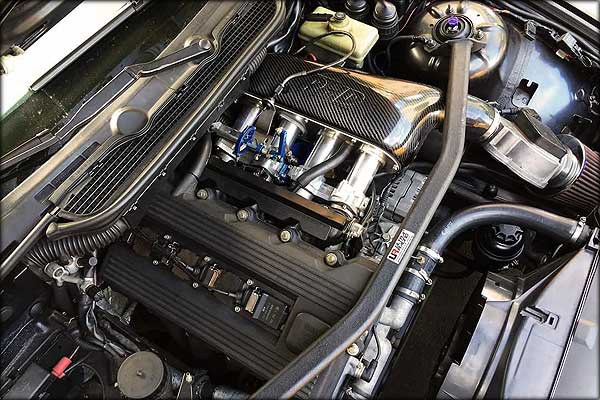Leading 5 BMW Engine Technologies Reinventing the Automotive Industry
Introducing the Intricacies of Next-Generation Power Units: a Deep Dive Into Advanced Engine Advancements and layouts
As we stand on the precipice of a new period in transportation, the intricacies of next-generation engine designs bid us to explore the advanced technologies and developments that guarantee to redefine the driving experience. Delving deeper into the realms of exhaust control, smart engine management systems, and the horizon of power unit development, we find ourselves on the cusp of a transformation that assures to improve the landscape of movement as we know it.
Advancement of Engine Materials

The shift towards advanced engine products has also made it possible for engineers to make engines with higher power outputs while keeping gas efficiency standards. As an example, the use of lightweight products lowers the overall weight of the engine, causing improved gas economic climate and lower emissions. Furthermore, innovations in products technology have enabled far better thermal administration within engines, resulting in raised dependability and long life.
Turbocharging and Supercharging Technologies
Just How do Turbocharging and Supercharging Technologies change engine efficiency and performance in modern cars? Turbo charging and turbocharging are innovations that considerably boost engine performance by boosting the amount of air intake right into the combustion chamber. Turbocharging accomplishes this by utilizing a turbine driven by exhaust gases to pressurize the intake air, while supercharging utilizes a belt- or chain-driven compressor to attain the very same result.
These technologies enable smaller, a lot more fuel-efficient engines to produce power equal to bigger ones, known as downsizing. Forcibly more air into the cylinders, turbo charging and turbocharging improve burning performance, causing enhanced horsepower and torque result without a considerable increase in engine dimension. This leads to better acceleration, towing capability, and total driving performance.
In addition, turbocharging and supercharging add to improved fuel efficiency by allowing the use of smaller sized engines that take in much less gas under regular driving conditions - bmw engine. This mix of improved performance and effectiveness has actually made turbocharging and supercharging indispensable components of numerous modern-day engine layouts
Emission Control and Environmental Impact
With boosting international worries regarding air top quality and ecological sustainability, the application of emission control innovations in vehicles plays an important role in decreasing unsafe contaminants launched right into the atmosphere. Modern cars are equipped with innovative exhaust control systems that help decrease the environmental influence of automobile operations. Catalytic converters, for example, are designed to transform toxic gases such as carbon monoxide gas, nitrogen oxides, and hydrocarbons right into much less harmful compounds like carbon dioxide and water vapor.
Furthermore, advancements in engine modern technology, such as the assimilation of exhaust gas recirculation systems and careful catalytic reduction, have actually significantly contributed to decreasing exhausts. These technologies operate in tandem to enhance burning performance and review minimize the release of damaging contaminants right into the air. In addition, the growth of crossbreed and electric lorries represents a critical step towards minimizing the general environmental footprint of the transport sector.
Intelligent Engine Monitoring Equipment

Moreover, these systems enable vehicles to satisfy stringent exhausts standards without compromising performance, offering a much more ecologically friendly driving experience. The integration of expert system and artificial intelligence abilities in engine management systems remains to press the boundaries of what is feasible, causing more improvements in performance, reliability, and overall automobile performance. bmw engine. As automotive modern technology breakthroughs, smart engine management systems will certainly play a crucial this post function fit the future of transportation in the direction of a much more lasting and reliable direction
Future Trends in Power Unit Growth
As smart engine management systems lead the way for boosted control and optimization in modern vehicles, future trends in power unit advancement are positioned to redefine the landscape of auto propulsion modern technologies. One of the key trends driving development in power device development is the shift towards electrification. With a raising concentrate on sustainability and decreasing carbon discharges, hybrid and electric powertrains are becoming more common in the vehicle sector. These different power resources provide boosted performance and performance while lining up with rigorous environmental policies.
An additional considerable trend is the integration of advanced materials and manufacturing strategies. Lightweight products such as carbon fiber and light weight aluminum are being used to decrease overall vehicle weight, boosting gas performance and efficiency. Additionally, improvements in 3D printing and additive production are making it possible for the production of complicated engine parts with greater accuracy and resilience.
In addition, synthetic knowledge and device discovering are playing an essential role in maximizing power device efficiency. These technologies allow for real-time tracking and flexible control, bring about extra effective and reliable power shipment. In general, future fads in power unit development are geared in the direction of sustainability, performance, and go to website efficiency, driving the automobile industry towards a new age of propulsion innovations.

Final Thought
In final thought, the developments in engine products, turbocharging, discharge control, and smart administration systems have actually paved the way for next-generation power units. The detailed layouts and developments in modern-day engines display the ongoing evolution of vehicle technology.
Discovering the progressive advancements in engine materials has been critical in boosting the efficiency and performance of modern engines. Over the years, the development of engine products has played an essential duty in pressing the boundaries of what engines can accomplish.The change towards advanced engine materials has also made it possible for engineers to design engines with higher power outputs while keeping gas effectiveness requirements.The execution of intelligent engine management systems in modern-day cars has actually transformed the means engines are regulated and maximized for performance and performance. By accumulating information in real-time and examining it with sophisticated algorithms, intelligent engine administration systems can adjust to driving designs, ecological factors, and engine wellness to make the most of power output while minimizing gas consumption and emissions.